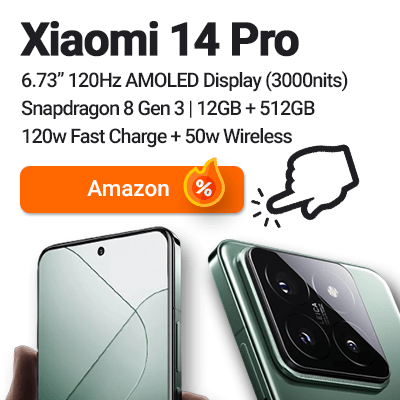
The tech market has witnessed the launch of two awesome little tablets recently. And in this quick guide, we pit the Redmi Pad Vs Xiaomi Pad 5 to see who’s the winner!
Let’s take a look at their displays, performance, audio capabilities, connectivity options, pen support and battery life to help you decide:
- Is it worth spending a little extra for the improved display, pen support and performance of the Xiaomi Pad 5?
- Or, is the Best Budget Tablet of 2023… the Redmi Pad… your perfect tablet choice?
Don’t forget to check out:
- Full Redmi Pad Review – Best Budget Tablet?
- What’s the Best Gaming Tablet? 2023 Edition
- Update: Xiaomi Pad 6 vs Xiaomi Pad 6 Pro
- Update: Xiaomi Pad 6 Pro Vs VIVO Pad2 – Battle for the mid-range!
Both Tablets are available now (See the latest prices below)
Display
When it comes to overall display quality, the Xiaomi Pad 5 takes the lead.
Both tablets have excellent high-resolution displays, but… The Xiaomi Pad 5 is 25% brighter, has 120Hz refresh rate (+25%) and offers better colour accuracy. The extra brightness also helps colours to feel more vibrant when playing games in brightly lit rooms.
Winner: Xiaomi Pad 5
Performance
The Redmi Pad is powered by a MediaTek MT8781 Helio G99 chipset (6nm) with an octa-core CPU configuration (2×2.2 GHz Cortex-A76 & 6×2.0 GHz Cortex-A55) and a Mali-G57 MC2 GPU.
In contrast, the Xiaomi Pad 5 is equipped with the more robust Qualcomm Snapdragon 860 (7nm) chipset, featuring an octa-core CPU setup (1×2.96 GHz Kryo 485 Gold & 3×2.42 GHz Kryo 485 Gold & 4×1.78 GHz Kryo 485 Silver) and an Adreno 640 GPU.
Let’s take a look at some benchmarks:
The Xiaomi Pad 5 has a clear edge over the Redmi Pad when it comes to performance.
Xiaomi Pad 5 scores:
- 555079 on AnTuTu v9 (+48%)
- 2583 on GeekBench v5.1 (+39%)
- 24fps on GFXBench ES 3.1 onscreen. (+84%)
Redmi Pad scores:
- 319077 on AnTuTu v9
- 1852 on GeekBench v5.1
- 13fps on GFXBench ES 3.1 onscreen.
Winner: Xiaomi Pad 5
Audio Capabilities
Both the Redmi Pad and Xiaomi Pad 5 are equipped with dual stereo speakers, incorporating a total of 4 speakers.
When it comes to audio loudness, the Redmi Pad is rated at -23.9 LUFS (Very Good), while the Xiaomi Pad 5 has a rating of -24.4 LUFS (Very Good).
In terms of actual sound quality, rather than loudness. Side-by-side, the Xiaomi Pad 5 has the edge with a slightly better bass response and a richer overall sound.
When not side-by-side, I don’t think most people would notice a difference. They both score a solid 4/5.
Winner: Xiaomi Pad 5
Connectivity Options
The Redmi Pad and Xiaomi Pad 5 both provide Wi-Fi 802.11 a/b/g/n/ac, dual-band, and Wi-Fi Direct support.
In terms of Bluetooth, the Redmi Pad features Bluetooth 5.2, A2DP, and LE, while the Xiaomi Pad 5 offers Bluetooth 5.0, A2DP, and LE.
Neither tablet has a 3.5mm audio jack, but both support USB Type-C connectivity. Additionally, both devices lack cellular connectivity, NFC, infrared ports, or radio functionality.
Winner: Redmi Pad
Battery Life
The Redmi Pad is fueled by a non-removable Li-Po 8000 mAh battery, compatible with 18W wired charging.
Conversely, the Xiaomi Pad 5 houses a slightly larger non-removable Li-Po 8720 mAh battery, capable of 33W wired charging with PD3.0 support.
The Xiaomi Pad 5 holds the advantage in this category due to its increased battery capacity and quicker charging capabilities.
Winner: Xiaomi Pad 5
SD Card Support
The Xiaomi Pad 5 does not support an external micro-sd card.
The Redmi Pad does support an external micro-sd card.
Winner: Redmi Pad
Pen Support
The Xiaomi Pad 5 does support the Xiaomi active pen which offers palm rejection and pressure sensitivity.
The Redmi Pad does not support the Xiaomi active pen.
Winner: Xiaomi Pad 5
Redmi Pad Vs Xiaomi Pad 5 – Final Thoughts
The Xiaomi Pad 5 outperforms the Redmi Pad in the areas of Display, Performance and Battery Charging, while the Redmi Pad offers better connectivity (Bluetooth and SD support).
In terms of ‘Value for Money?’, both devices score a solid 4.5/5.
When considering what tablet to buy, budget is king. And for this reason, I think the Redmi Pad wins as it’s easier to get a hold of one and for a lower price in retail.
Winner: Redmi Pad 5
| Feature | Redmi Pad | Xiaomi Pad 5 |
|---|---|---|
| Dimensions | 250.38 x 157.98 x 7.05 mm, Weight: 445g | 254.69 x 166.25 x 6.85 mm, Weight: 511g |
| Display | 10.61″, 1200 x 2000, 90Hz, 400 nits (typ), 1 billion colors | 11″, 1600 x 2560 (WQHD+), 120Hz, 500 nits (typ), DCI-P3 support, 1 billion colors |
| Processor | MediaTek Helio G99, up to 2.2GHz, 6nm | Qualcomm Snapdragon 860 |
| Antutu | 319,577 | 556,331 |
| Camera | Rear: 8MP, Front: 8MP, 105° FOV with FocusFrame | Rear: 13MP, Front: 8MP, 4K@30fps, 1080p@30fps, 720p@30fps |
| Speaker | 4 speakers, Dolby Atmos supported | 4 speakers, Dolby Atmos supported |
| Storage & RAM | 3GB+64GB, 4GB+128GB, 6GB+128GB, LPDDR4X RAM, UFS 2.2 storage | 6GB+128GB, 6GB+256GB, LPDDR4X RAM, UFS 3.1 storage |
| Battery & Charging | 8000mAh (typ), 18W fast charging | 8720mAh (typ), 33w PD3.0 |
| Connectivity | Bluetooth 5.3, Wi-Fi 5 (2.4GHz/5GHz), USB-C | Bluetooth 5.0, Wi-Fi 802.11a/b/g/n/ac, USB-C |
| Operating System | MIUI | MIUI |








